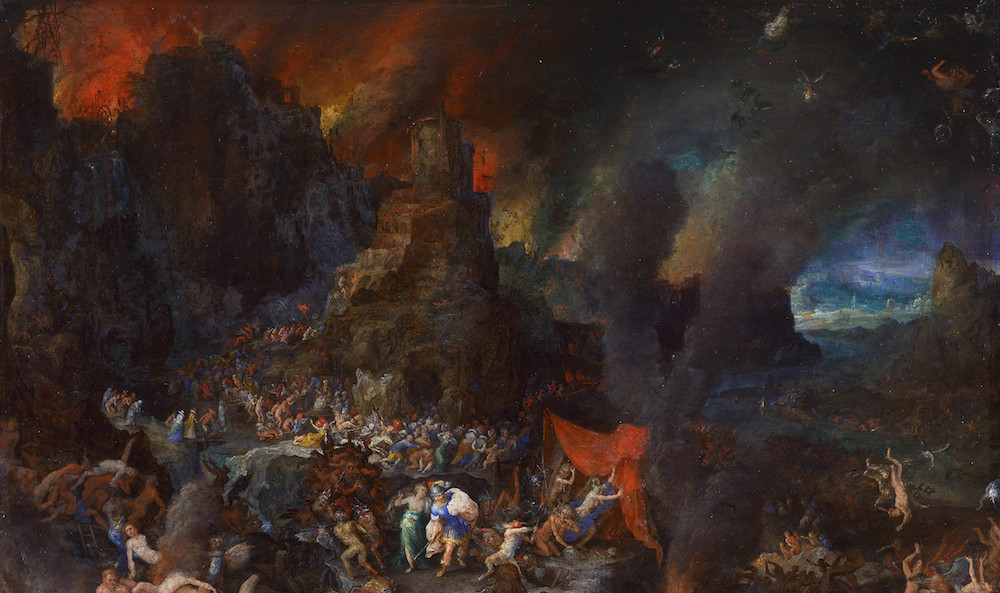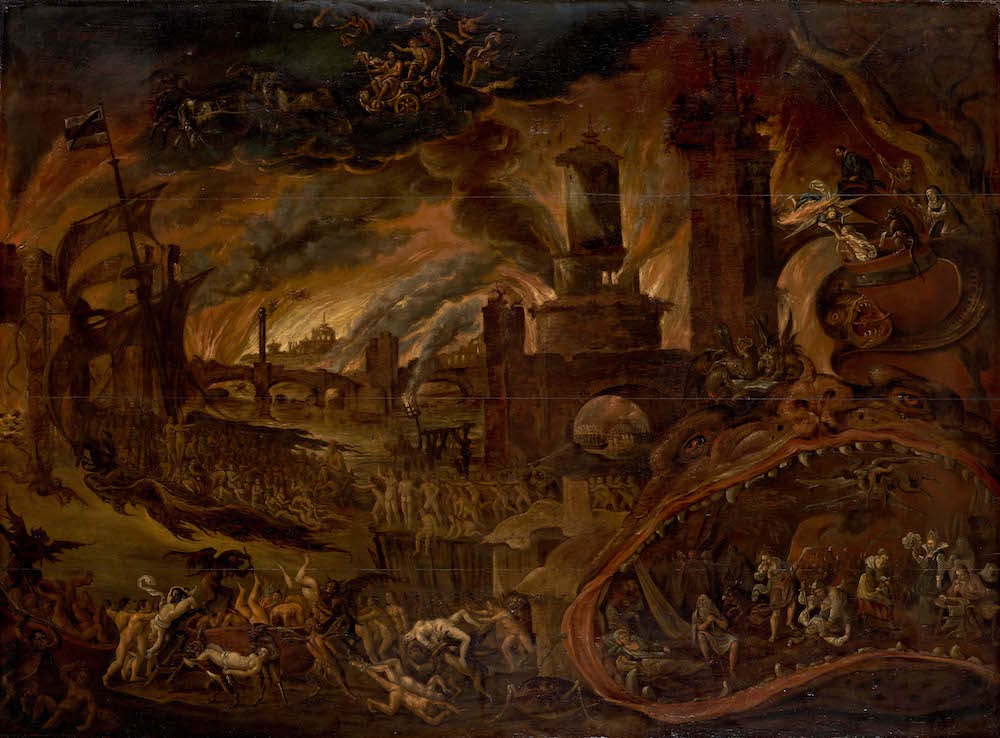Last month, we looked at four memorable things the Trojan hero Aeneas saw in the Underworld, and we turned them into encounters fit for dungeons and extraplanar adventures. Let’s look at four more!

After Aeneas enters the cave to the Underworld, he encounters a cluster of minor Roman deities. Most fall into the standard Roman template of a god or goddess named for the abstract concept she personifies. One is Sleep, whose association with death is almost universal. Others are beings better avoided: Grief, Fear, Want, Distress, and Death. Some are downright dangerous: Disease, War, Strife (“her snaky locks entwined with bloody ribbons”), and – most terrifying of all – the Furies, three implacable goddesses of vengeance.
These gods and goddesses do not interfere with Aeneas’ passage, but in a similar encounter, they may interact with your NPCs. Death may want to thank the PCs for sending him so many souls in their many combats. Strife may want to introduce herself and explain that the reason the PCs’ lives are so hard is because she follows them around. Offending the goddess Strife would be unwise, but befriending her might be too! If she likes the PCs, she may be more likely to hang around them, bringing discord and bad luck. If the party seeks treasure, Want may see herself as their guardian and tempter. She may tell them about a secret treasure elsewhere in the Underworld, perhaps guarded by Dis Pater or some other powerful figure, hoping to tempt them into further unwise pursuit of riches.

Aeneas steers well clear of Tartarus, the deepest and most hellish part of this version of the Underworld. But he sees it from afar and has its details described to him by his guide. The way to Tartarus is blocked by a fortress, itself guarded by three walls and a moat of fire. Inside the fortress, Rhadamanthus, once king of Crete, tortures wicked souls into confessing their sins. Once they confess, they pass through a gate guarded by a hydra with “fifty black gaping throats” and are cast into Tartarus. The pit itself is behind or within the fortress, and is twice as deep as Mount Olympus is tall. At its bottom, titans, wicked giants, and the most monstrous of sinners are tortured for eons. Each sinner has unique torments designed specifically for her.
If your dungeon, extraplanar adventure, or literal voyage to Hell has a specific goal (perhaps recovering a treasure, getting some information from a dead soul, or retrieving a MacGuffin), Tartarus is the place to put it. Getting into Tartarus should be a lot of fun. First, the PCs must find a way across the moat of fire and over the fortress’ three walls, which may or may not be guarded, depending on how much combat you want. Then to get into the pit, the PCs must decide whether to wheedle wise king (now pitiless torturer) Rhadamanthus or to try their luck with the hydra.

Aeneas finds the object of his quest – the soul of his father, Anchises – in the Blissful Groves, an idyllic region of the Underworld. This cavern of soft meadows and burbling streams is lit by its own rosy sun and stars. Here, the most virtuous of the honored dead wrestle, dance, and sing. Anchises introduces Aeneas to the souls of men who, in their next reincarnation, will be the great men of Roman history: the first three kings of Rome, a variety of Roman generals, and Augustus, the emperor when this story was written.
In an Underworld setting with reincarnating souls, your PCs can get a chance to hobnob with the souls of great men and women yet to be born. If you’re playing for high stakes (the fate of the world, that sort of thing), these souls might want to urge the party on. “One way or another, I’m supposed to become a great queen in two hundred years. My fate is to be a kind ruler who ushers in a golden age of art and learning. But if you’re defeated by the necromancer Ahriman, I’ll be corrupted by him and bring my people a thousand years of misery. I beg of you not to let that happen.”
–
One of Aeneas’last sights in the Underworld is the river Lethe. Through this river, the dead return to life. Its waters cause the souls who drink of it to forget their past lives so they can return to the land of the living in the bodies of new infants. Those in the Blissful Groves get to spend a thousand years in their joyful paradise before they drink from the Lethe. Those who dwell in most of the rest of the Underworld are more or less free to drink from the Lethe’s waters as they wish. But the evil must be tortured in Tartarus first. These souls are those who were so wicked in life that the taint of their evil ingrained itself into the very nature of their being. Torture scrubs the wickedness from them until the souls return to their original, unsoiled nature. Only then are they dispatched to the Lethe. Considering that many of the souls described in Tartarus had been down there for centuries, the cleansing process apparently takes some time.
Crossing a river like the Lethe could be a fun puzzle. Get any of the water in your mouth and you’ll lose all your memories, necessitating an adventure to get them back. Maybe just being around the water’s vapors causes spellcasters to temporarily forget some of their spells. You can’t cross the river in a boat, because the rushing wind of souls racing on to their new lives risks upsetting it, tipping everyone into the river. What clever scheme will the PCs come up with to get across the river safely?
All quotes taken from this translation by Henry Rushton Fairclough.






